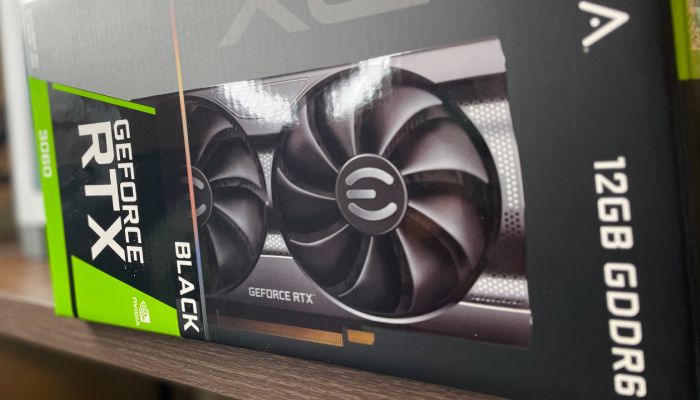Imagine for a moment that there’s such a thing as a GPU that’s about 20 percent faster than its predecessor and costs less money. That sounds like a good product. Sadly, only one of those things exists right now.
Nvidia GeForce RTX 3060 12GB Review
On paper, Nvidia’s RTX 3060 continues the well-trodden path of releasing smaller and less costly GPUs that also trim performance, at a theoretically lower price. Unfortunately, cryptocurrency mining, the pandemic, and global shortages of chip manufacturing and substrates make the latest addition feel every bit as much vaporware as the other Nvidia Ampere and AMD RDNA2 GPUs launched in the past nine months.
But these GPUs do actually exist. We have tested every one of them, and you can even find them on places like eBay. It’s just that most of the cards are marked up to two or three times the “official” MSRPs. Unfortunately, we don’t anticipate any modern graphics card will sell for its MSRP any time this year. Let’s just assume you could choose between the cards, though, rather than just taking whatever GPU you manage to find in stock. How does the RTX 3060 stack up?
To date, this is the most compact and affordable RTX card Nvidia has created. The GA106 die size is 276mm2, about 38 percent smaller than the TU106 that powered the RTX 2060. It’s also nearly double the theoretical compute, with twice as much GDDR6 memory. In our testing, the 3060 ends up about 20-30 percent faster than the 2060, depending on the game and settings. But let’s not get too excited, as the old RX 5700 XT still typically performs better than the 3060 in traditional (i.e., not ray traced) games.
The DLSS 2.0
We also ran the cards through an extended suite of ray-tracing benchmarks, with DLSS 2.0 quality mode enabled. The RTX 3060 strutted its stuff, beating the RTX 2060 by 35 percent on average at 1080p and 40 percent at 1440p. Against AMD’s lowest-tier RX 6000 card, the RX 6700 XT, ray-tracing performance at native resolution was a tie, but add DLSS 2.0 to the picture and the 3060 was up to twice as fast.
And DLSS isn’t just for ray-tracing games. More than a dozen titles have DLSS 2.0 support and don’t use ray tracing, such as Death Stranding and Call of Duty: Warzone. Plus, all the games with ray tracing and DLSS 2.0 can still use DLSS even if RT is off. Comparing DLSS to native resolution isn’t an apples-to-apples matchup, but if you’re looking at DLSS Quality mode versus native resolution, it’s difficult to spot any differences—unless you look at frame rates, in which case, DLSS tends to be 30-50 percent faster.
AMD is still working on its alternative to DLSS, called FidelityFX Super Resolution. Actual details and screenshots are lacking, however, and Nvidia has had more than a two-year head start. With Unreal Engine and Unity Engine both supporting DLSS 2.0, there will likely be even more games taking advantage of Nvidia’s tech. Could FSR match DLSS in image quality and performance? Perhaps. It just needs to come reasonably close, but then we already have games that use temporal upscaling and it doesn’t look nearly as good as DLSS 2.0.
Availability
The problem with availability remains, though. Nvidia even implemented anti mining tech to make the cards less enticing to Ethereum miners, but then accidentally gave away the key to the lock with a dev driver. It’s working on updated models that will fully reinstate the lock, and the tech will likely extend to other Nvidia Ampere GPUs in the future. Even before the anti-mining lock was circumvented, however, the cards were selling for $800 or more online.
If at some point over the coming months the RTX 3060 starts selling for $350 or less, it will be a great option. But until and unless that happens, it’s all hype and lacking in substance. At this rate, we could see the next-generation RTX 40-series GPUs launch before supply of the RTX 30-series reaches the desired level.

